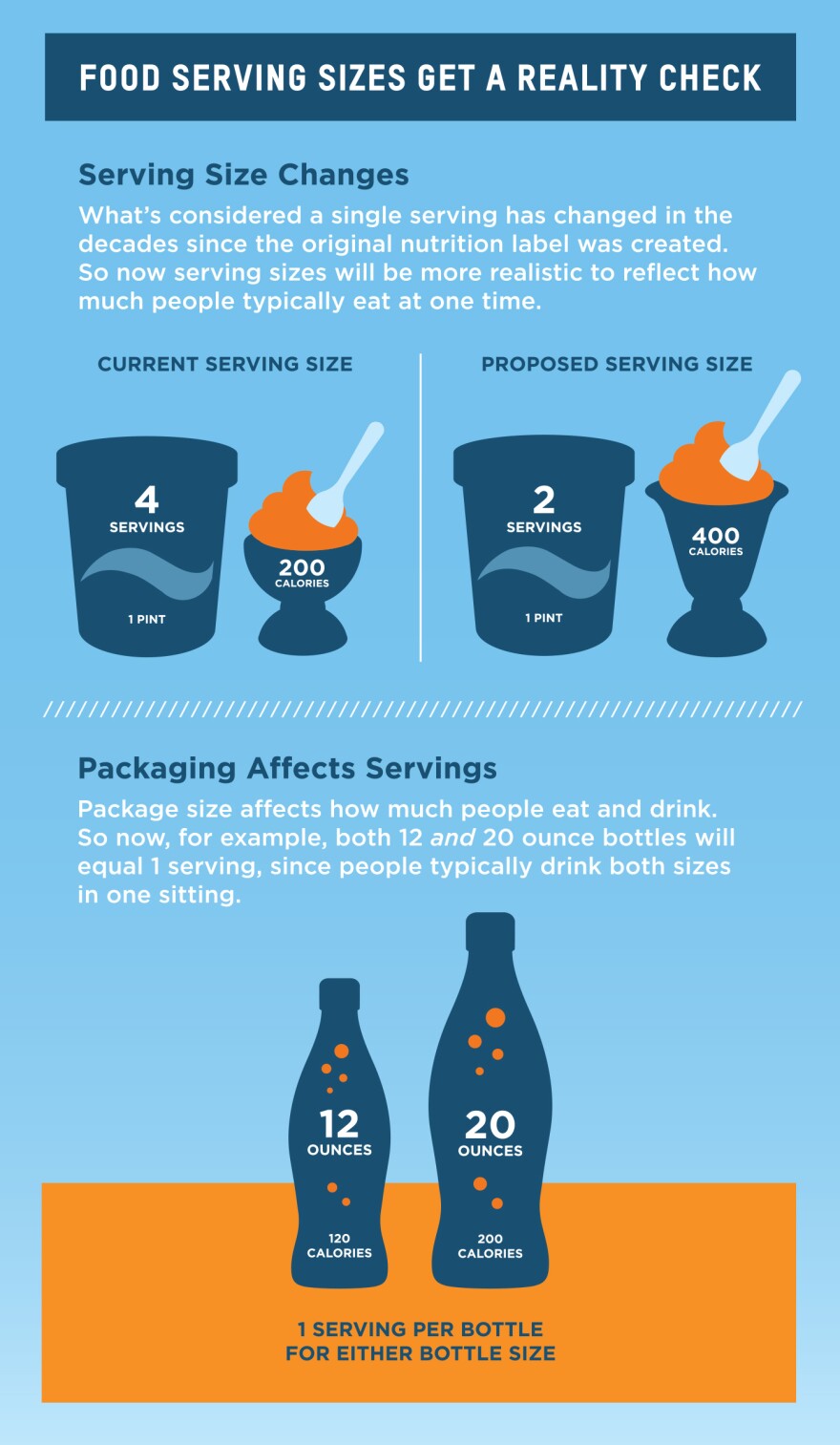Ready for a reality check about how many calories you're eating or drinking?
The proposed new nutrition facts panel may help.
The Obama administration Thursday released its proposed tweaks to the iconic black and white panel that we're all accustomed to seeing on food packages.
The most visible change is that calorie counts are bigger and bolder — to give them greater emphasis.
In addition, serving sizes start to reflect the way most of us really eat. Take, for example, ice cream. The current serving size is a half-cup. But who eats that little?
Under the proposed new label, the serving size would become 1 cup. So, when you scoop a bowl of mint chocolate chip, the calorie count that you see on the label will probably be much closer to what you're actually eating.
Another example: A 20-ounce bottle of soda would be labeled as one serving. And with that, the calorie count at the top would come closer to reality.
Another significant change: The new panel will include a separate line for added sugars.
This is aimed at helping consumers distinguish between the sugars that are naturally found in foods (such as the sugar in raisins found in cereal) from the refined sugars that food manufacturers add to their products.
"I've been hoping for years that the FDA would list added sugars," Marion Nestle, a professor of nutrition at New York University, tells us. "I definitely think it's helpful."
As we've reported, there's a solid body of evidence linking excessive sugar consumption to an increased risk of heart disease and other ailments.
And the intent here, senior administration officials say, is to help cue Americans to consume less of it. Despite industry opposition to the listing of added sugars, officials say they're confident the science is strong enough to justify adding it to the label.
The proposed new label makes a slight tweak to sodium labeling, by making a small downward revision in daily values for sodium. It's a "step in the right direction," says Michael Jacobsen of the Center for Science in the Public Interest. He points to the link between excess salt consumption and heart disease.
So why these changes now? "To help address obesity, one of the most important public health problems facing our country, the proposed label would drive attention to calories and serving sizes," writes Michael Taylor, the FDA's deputy commissioner for foods, in a release.
And as part of the streamlining efforts, the label would cut out the listing of calories from fat. This is, in part, a reflection of the fact that there are good fats and bad fats. The fat-free thinking that so swept the country in the 1990s, when the original nutrition facts panel was introduced, has given way to much more nuanced thinking about fats.

The first lady is expected to unveil the new label Thursday during a White House ceremony. In a statement, she wrote, "This is a big deal, and it's going to make a big difference for families all across the country."
Here are other proposed changes, according to the FDA:
Expect an active debate on the proposed changes.
The Grocery Manufacturers Association said in a statement: "It is critical that any changes are based on the most current and reliable science. Equally as important is ensuring that any changes ultimately serve to inform, and not confuse, consumers."
The FDA says it will accept public comment on the proposal for 90 days.
Copyright 2021 NPR. To see more, visit https://www.npr.org. 9(MDEwMDkzMjQzMDEzNDc2MjU4NDA0M2ExOA004))




